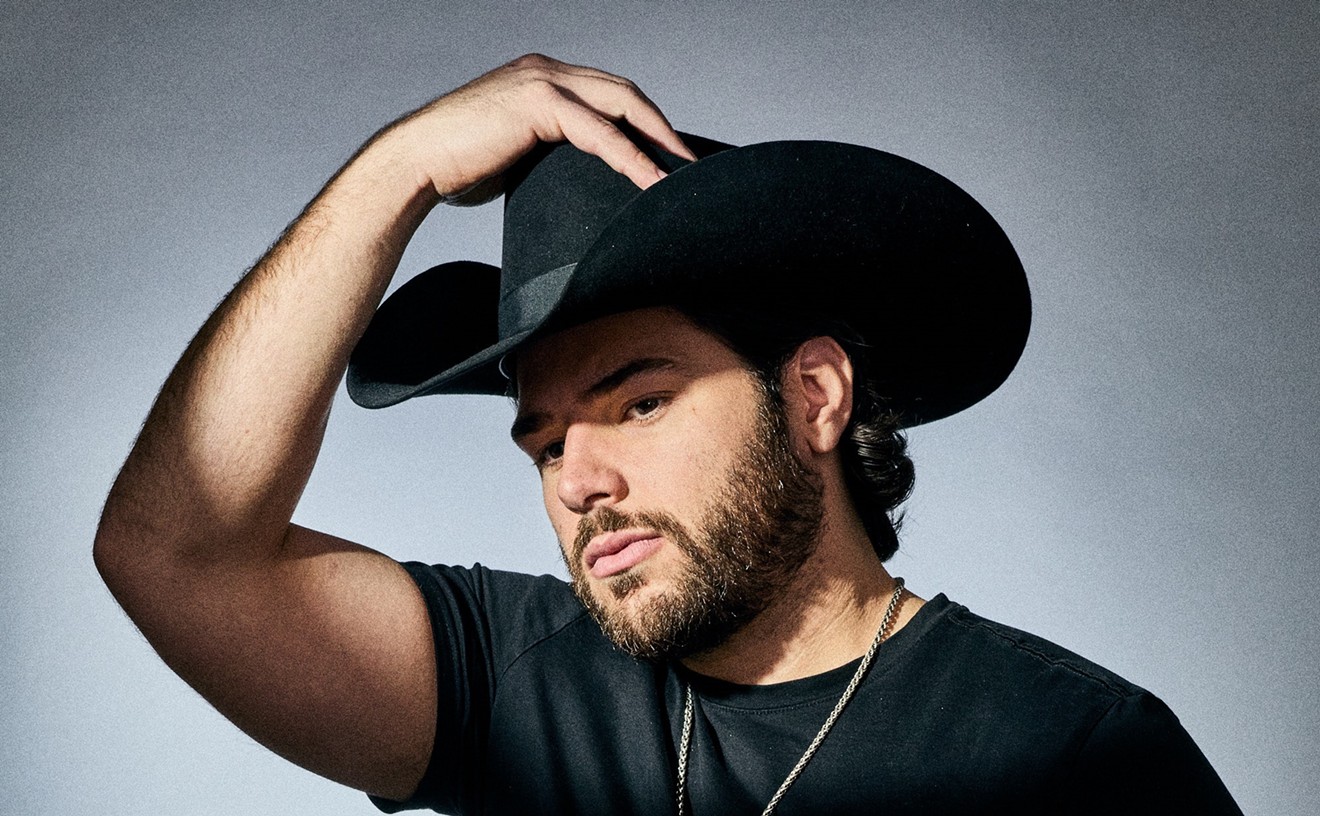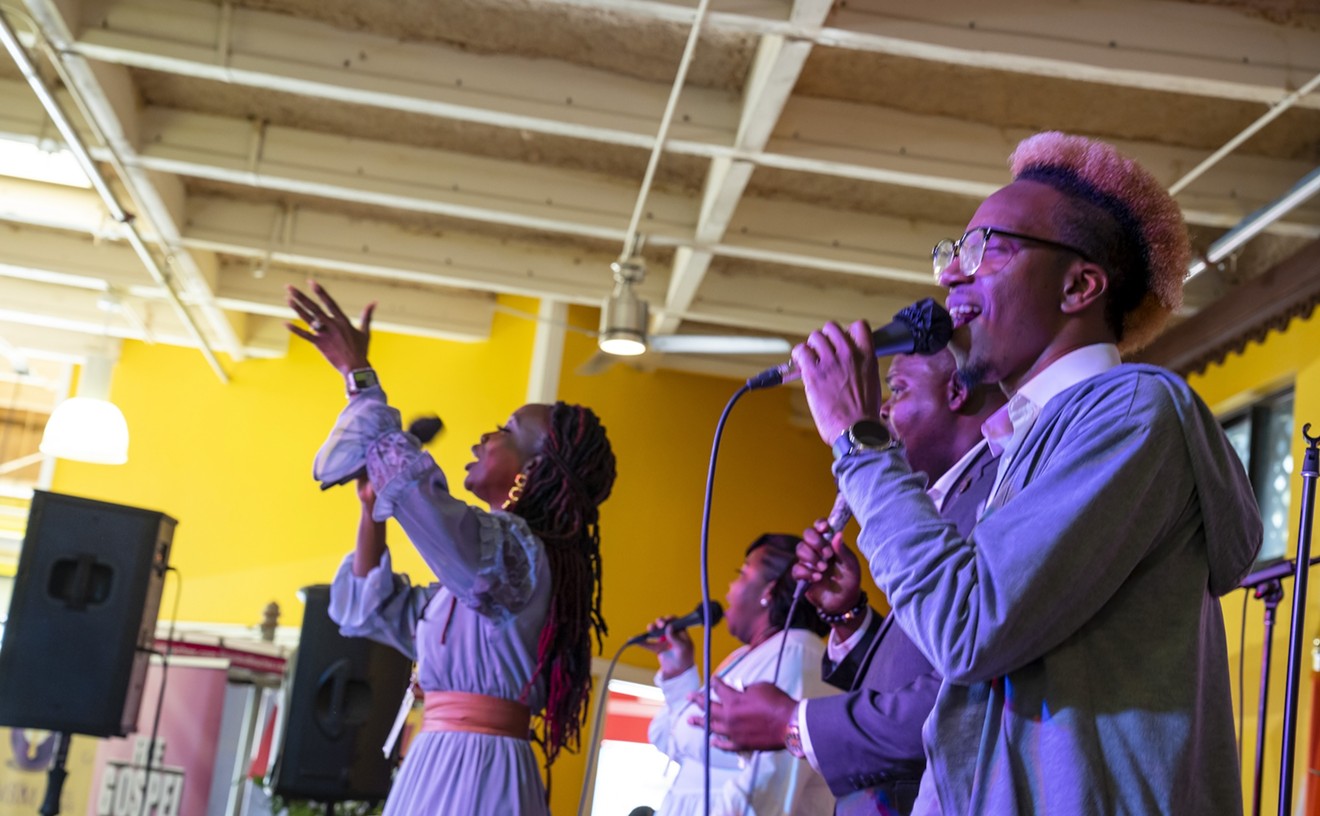In comparison to new Uruguayan names like Drexler (the most important solo artist since Roos) and popular rock bands like La Vela Puerca, it may seem as if Roos is beginning to slow down after a long and successful career. But relax: The covers album is just a stopgap release during a well-deserved break. After paying tribute to his influences, Roos is warming up for a new chapter in his own career. "I'm always looking forward, I'm still in the struggle," says Roos in a phone conversation from Montevideo. "I always write songs that I'll record one day, but I'll record them when they have to be recorded."
The singer, songwriter, and composer can make everyone wait. His blend of candombe (an Afro-Uruguayan beat that's arguably the fiercest rhythm you'll ever hear), murga (a Uruguayan vocal and percussive Carnival style with roots in Spain), Piazzolla-esque tango, Beatles-esque pop, rock, jazzy solos, and Latin American folk has turned him into one of the most popular artists in Uruguay and Argentina for the last three decades.
But things weren't always easy for him. To begin with, he left Uruguay in 1975 during the military dictatorship's decade-long rule when "the thing" to do was "to stay and resist" them. For the next several years, he floated around Europe, surviving by making salads on ships and playing on subways, nightclubs (anything from salsa, rock, and jazz to cumbia and Andean music), and as a session musician. After an adventurous four-month hitchhiking trip from Mexico to Uruguay, he released his debut, Candombe del 31 (1977).
Roos's time spent away from Uruguay didn't negatively impact his career, but it did keep him from achieving massive success. He had good compositions, but he didn't perform them in his native country until 1980, when he played a show marred by bad sound and a censorious government that kept him from performing some of his most popular songs, including "Los Olimpicos," a murga song about exiles.
On top of that, Roos didn't seem to care for the canto popular movement, a trend he once described as "a bag of great and horrible things." "After I released my first album, they questioned the fact that I didn't stay, but I never cared," says Roos. "My answers have always been albums." When he presented Aquello in 1980 (his third album, chosen by Uruguayan critics as best album of the year), he would sarcastically announce, "I'm a rocker," when the press tried to forcibly lump him into the folk-oriented and nationalistic canto popular.
He wasn't completely lying. From an early age, Roos has been a proud Beatlemaniac. Their influence affects his music in three ways: simple but imaginative song structures; a poetic balance among the mundane, the unpredictable, and the sublime; and long, hypnotic, trancelike choruses à la "Hey Jude."
After five increasingly popular and critically acclaimed albums (now recorded in Uruguay, where he has lived since 1984), Roos finally achieved widespread commercial success. In 1985 Brindis por Pierrot (A Toast for Pierrot, pierrot being the symbol of a Carnival bohemian character) became the best-selling album in Uruguayan history and earned more than 75 gold and platinum records (gold certifications representing 3000 copies sold), an unprecedented figure for a country with a population of little more than three million. It is a masterpiece of murga that turned Roos into his country's number one popular artist.
The title song, sung by guest vocalist Washington "Canario" ("The Canary") Luna -- then considered one of the best murga singers in Uruguay -- is a heart-wrenching farewell song to Carnival. His life is like a soccer stadium: "They throw you in the field/Without asking you whether you want to play or not/In case this wasn't enough, you're the goalkeeper/You spend your whole life covering holes/And if by accident you become good at it/They take a dive/And the referee calls 'penalty'!" "It's a song about strength, despite its tremendous skepticism," says Roos. "My career is before and after Brindis. It brought my previous semi-hits to the attention of a massive public."
Brindis por Pierrot would also change the course of a good portion of Argentine rock. "I turned to murga and candombe when I heard Brindis por Pierrot," says Juan Subirá, keyboardist for Argentina's platinum act Bersuit Vergarabat and co-author of "Negra Murguera" and other Bersuit hits inspired by Roos's murga-canción (murga-song) style. "It blew me away. I had no idea of who he was. I immediately went to Uruguay and soaked myself in Roos, murga and candombe."
Even Rubén Blades used Roos's candombe ballad "Amándote" on his Grammy-winning La Rosa de los Vientos. "What a beautiful song," Blades remembers saying when he heard "Amándote" for the first time. "Wow! What a great song. How can I get a hold of this guy? I want to use it in my next record." Blades wasn't bluffing: He included "Amándote" as the last track on that 1996 album, even though it was a collection of songs by other Panamanian composers.
"I'm a big fan since 'Cometa de la Farola,'" says top Latin rock producer and two-time Latin Grammy Award winner Gustavo Santaolalla, referring to a song on Roos's Candombe del 31. "He's one of the key pillars of Latin American music."
However, in El sonido de la calle (The Sound of the Street), a book by Uruguayan author Milita Alfaro, a sincere Roos described himself as a "consolidator" of different streams of Uruguayan popular music rather than an "innovator." But after twelve critically and commercially successful albums (not counting rarities, compilations, and his productions for other artists), there's just too much water under the bridge. "True, I've always considered myself more important as a consolidator than as a creator," says Roos, "but after so much music I must raise a little flag and say, 'Hey, I've also done something, haven't I?'"
Yet despite recording, touring, and becoming increasingly popular in Buenos Aires, for some reason his music is virtually unknown beyond the Río de la Plata, which has prompted some to say that Roos is too comfortable with his status as a Uruguayan icon. "I was always interested in playing everywhere," protests Roos. "But I was never offered a serious proposal [to come to the U.S.]. Some people suggested I come by myself and form a band here. I wasn't interested in that." In 1989 he was invited by RCA to spend a month recording in Nashville for what he derisively terms "a so-called Hispanic project," but nothing happened. "It wasn't about money, it was about the musical angle," says Roos dismissively. "They wanted me to make commercial music and be their puppet."
Finally, a New York-based Uruguayan promoter named Emilio Baglini got in contact with Roos through the latter's production company and sought to bring him to the States, a serious risk considering that the legendary musician is mostly known here among a handful of music experts. He's bringing an eleven-man band (ranging in age from 24-38) that includes some of Uruguay's top musicians: brothers Andrés, Martín, and Nicolás Ibarburu (bass, drums, and electric guitar, respectively); Gustavo Montemurro (keyboards); legendary Walter Haedo on percussion; Roos on acoustic guitar and vocals; plus singers Freddy Bessio, Emiliano Muñoz, Pedro Takorian, Ney Peraza (who also plays guitar), and Alvaro Montes. Since 2001, Roos's backing group has been able to endure his famously obsessive rehearsals. What they produce together onstage as a result is truly eloquent, a nonstop candombe and murga tour de force with jazzlike virtuoso playing, chilling percussion and vocals, and a rock and roll attitude.
Gustavo Santaolalla, who is not known for giving away praise, attests to the power of Roos's music. "I saw them recently in Uruguay, and they cracked my head open."
Click here for a related sidebar to this story.










